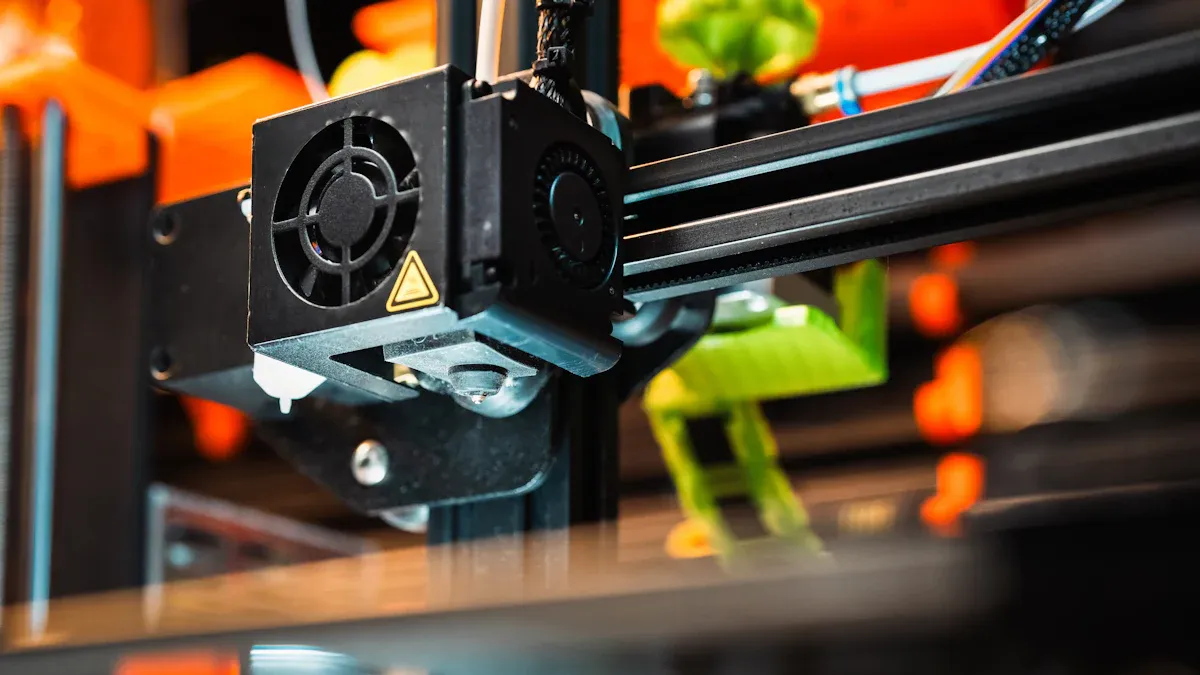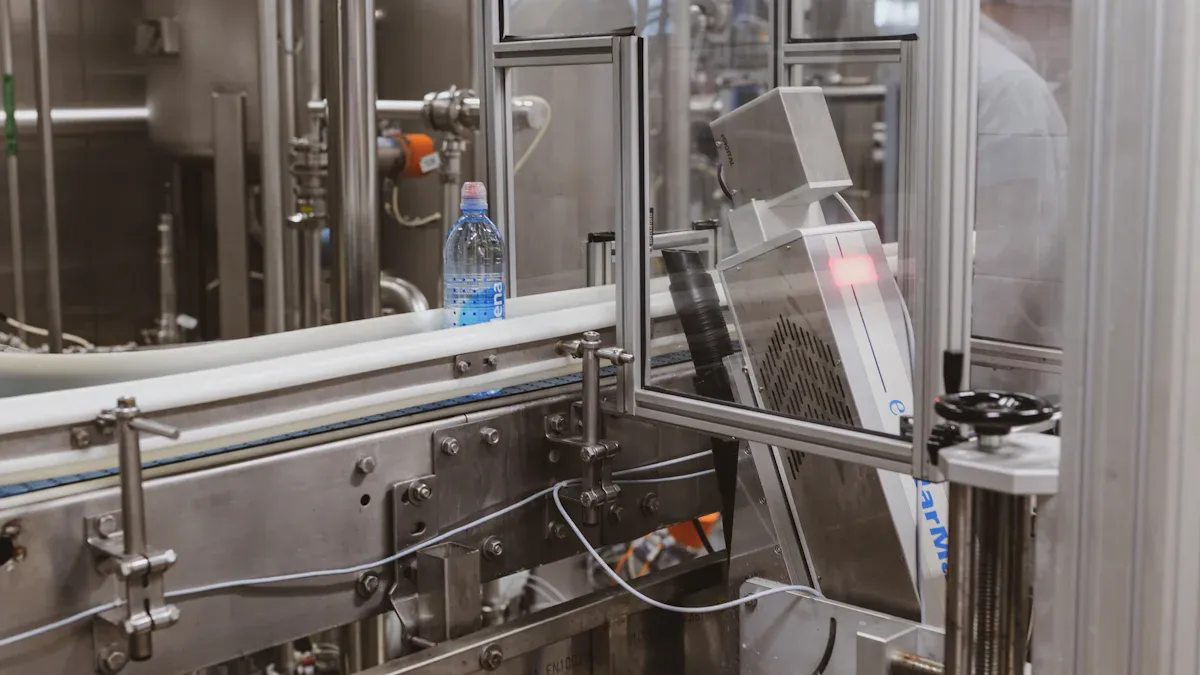
Imagine a world where production happens precisely when you need it, without excess materials or wasted time. This is the promise of just-in-time manufacturing. It transforms automotive injection molding by ensuring parts are created on demand. You reduce waste, save costs, and improve efficiency. This approach directly supports the industry's 2025 goals. By embracing just-in-time, you also align with sustainability efforts, minimizing environmental impact while meeting customer demand swiftly.
The future of injection molding depends on your ability to adapt to these innovative practices.
Just-in-time manufacturing revolves around a few key principles that ensure smooth and efficient production. First, a pull-driven output means you only produce parts when there is actual customer demand. This prevents overproduction and reduces waste. Second, continuous flow ensures materials move seamlessly through the production process, minimizing delays. Another critical principle is takt time, which aligns production speed with customer demand to avoid shortages or excess inventory. The Kanban system, a visual tool, helps you manage inventory and production flow effectively. Lastly, strong supplier relationships are essential. By coordinating closely with suppliers, you can receive materials in small, timely batches, keeping your system lean and efficient.
The journey of just-in-time manufacturing began in the 1950s and 1960s with Toyota's innovative approach to automotive manufacturing. By the 1970s and 1980s, Western manufacturers, especially in the automotive sector, adopted JIT to improve efficiency and reduce costs. The 1990s and 2000s saw the integration of digital systems like enterprise resource planning, which enhanced JIT's capabilities. In recent years, advancements in IoT, AI, and data analytics have transformed JIT into a data-driven system. These technologies allow you to predict demand more accurately and optimize production processes further.
| Time Period | Key Developments |
|---|---|
| 1950s-1960s | Development and implementation within Toyota |
| 1970s-1980s | Adoption by Western manufacturers, particularly in automotive sectors |
| 1990s-2000s | Integration with digital systems and enterprise resource planning |
| 2010s-Present | Incorporation of IoT, AI, and advanced analytics for data-driven JIT |
In automotive injection molding, just-in-time manufacturing plays a vital role. It helps you meet the industry's demand for precision and efficiency. By producing parts only when needed, you minimize waste and optimize inventory management. This approach also ensures you can adapt quickly to changes in customer demand. Studies show that JIT improves communication, reduces waste, and enhances operational efficiency. For example, Mackelprang and Nair (2010) found a positive link between JIT practices and performance, highlighting its importance in delivering high-quality parts on time. In a competitive field like automotive manufacturing, adopting JIT gives you a significant edge.

Just-in-time manufacturing helps you eliminate waste and achieve lean production in automotive injection molding. By producing parts only when needed, you avoid overproduction and reduce excess inventory. This approach ensures that materials are used efficiently, minimizing scrap and unnecessary costs. For example, JIT allows you to order materials in smaller, precise quantities, which prevents stockpiling and reduces the risk of obsolescence.
"Lean production is not just about cutting costs; it's about maximizing value by using resources wisely."
In addition, JIT promotes continuous improvement in your production system. By focusing on waste reduction, you can identify inefficiencies and implement changes that enhance overall manufacturing efficiency. This optimization not only benefits your bottom line but also supports sustainability by reducing the environmental impact of wasteful practices.
JIT significantly improves cost efficiency and inventory control in automotive manufacturing. Here’s how it works:
These benefits directly impact your profitability. By adopting JIT, you can allocate resources more effectively and focus on producing high-quality parts. This approach also enhances your ability to manage inventory, ensuring that you always have the right materials at the right time. As a result, you can maintain a lean and efficient production system that adapts quickly to changes in demand.
JIT enables you to achieve quick turnaround times in automotive injection molding. By producing components precisely when needed, you can reduce lead times and streamline the automobile production process. This lean manufacturing approach ensures that you meet customer demand without delays, improving your time-to-market for new products.
For instance, JIT allows you to respond swiftly to changes in consumer preferences or market trends. By maintaining a flexible production system, you can adapt to fluctuations in demand and deliver high-quality parts on schedule. This agility not only enhances your competitiveness but also strengthens your reputation for reliability and efficiency.
"In today’s fast-paced automotive industry, the ability to deliver on-demand manufacturing solutions is a game-changer."
Moreover, JIT supports tooling optimization, ensuring that your injection molding processes remain efficient and precise. By focusing on quality control and continuous improvement, you can produce parts that meet the highest standards of quality while minimizing production costs.

Digital technologies and Industry 4.0 are revolutionizing just-in-time manufacturing. These innovations bring tools like IoT, AI, and cloud computing into your production processes. They allow you to analyze real-time data and predict maintenance needs before issues arise. This level of insight ensures your injection molding operations stay efficient and uninterrupted.
"Industry 4.0 technologies improve supply chain transparency, a critical factor for JIT success."
For example, digital twins—virtual models of manufacturing processes—help you simulate supply and demand changes. This lets you make informed decisions about production schedules. Additionally, 60% of companies have prioritized analytics software to improve forecasting. These tools help you identify potential shortages of raw materials or components before they disrupt your system. By integrating these technologies, you can optimize your production system and maintain a lean inventory.
Automation and robotics are transforming how you approach JIT in injection molding. Automated systems streamline repetitive tasks, reducing errors and saving time. Robots equipped with advanced sensors can handle materials, monitor quality, and even perform maintenance tasks. This ensures your production remains consistent and efficient.
Companies like Plastikos Inc. demonstrate the power of automation in JIT. They use integrated molding machines and robots to produce millions of parts annually. This setup not only saves valuable cycle time but also ensures quality through precise monitoring systems. Similarly, Vorwerk & Co. KG employs robots in their production lines to enhance efficiency and safety. These examples show how automation can elevate your JIT processes, making them faster and more reliable.
"Robotics in JIT processes ensure precision and reduce downtime, giving you a competitive edge."
By adopting automation, you can also address labor shortages. Robots can take over tasks that require high precision, allowing your workforce to focus on more complex responsibilities. This balance improves overall productivity and ensures your injection molding operations meet the demands of modern automotive manufacturing.
Sustainability is becoming a cornerstone of JIT practices in injection molding. By reducing waste and optimizing resource use, you can align your operations with eco-friendly goals. JIT minimizes overproduction, which reduces excess inventory and material waste. This approach not only benefits the environment but also lowers your costs.
Emerging technologies further support sustainability in JIT. For instance, energy-efficient molding machines consume less power, reducing your carbon footprint. Recyclable materials and biodegradable polymers are also gaining traction in the industry. By incorporating these materials into your production, you can create high-quality parts while minimizing environmental impact.
"Sustainability in JIT is not just a trend; it’s a necessity for the future of manufacturing."
Additionally, digital tools like AI and IoT help you monitor energy consumption and identify areas for improvement. These insights enable you to make data-driven decisions that enhance both efficiency and sustainability. By prioritizing eco-friendly advancements, you can position your injection molding operations as leaders in sustainable automotive manufacturing.
Supply chain disruptions pose significant challenges to just-in-time (JIT) systems, especially in automotive injection molding. Vulnerabilities arise from dependency on tiered supplier networks, where failures at lower tiers can halt production. Sudden demand spikes often lead to mismatches between supply and demand, creating shortages. Price volatility due to raw material shortages further complicates operations. Cybersecurity threats, such as ransomware attacks, also jeopardize the efficiency of JIT systems.
To manage these disruptions, you can adopt a structured approach:
1. Identify risks at immediate, short-term, and long-term levels.
2. Develop contingency plans to address potential disruptions.
3. Use digital monitoring tools and data analytics to predict and respond to issues.
4. Automate operations to reduce errors and improve response times.
5. Collaborate closely with suppliers to ensure a steady flow of materials.
By implementing these strategies, you can strengthen your supply chain management and maintain the reliability of your injection molding operations.
The skilled labor gap remains a pressing issue in JIT practices. Many workers lack the technical expertise required for advanced manufacturing processes. However, sector-based training programs have proven effective in bridging this gap. These programs align training with employer needs, improving job placement and retention rates. Workers gain technical knowledge and cognitive skills, enabling them to meet the demands of modern injection molding systems.
Vocational training programs also play a crucial role. Features like practical work experience, skills certification, and job placement support enhance their effectiveness. By investing in targeted training, you can equip your workforce with the skills needed to operate JIT systems efficiently. This approach not only addresses labor shortages but also boosts overall productivity.
Technology is a powerful tool for overcoming challenges in JIT implementation. Research shows that JIT systems can influence supply chain risks. Supplier JIT reduces inventory disruption risks, while customer JIT helps manage customer disruption risks. By leveraging technology, you can enhance efficiency and mitigate these risks effectively.
Digital tools like IoT and AI enable real-time monitoring of supply chains. Predictive analytics help you anticipate disruptions and adjust production schedules accordingly. Automation further streamlines operations, reducing errors and improving consistency. These advancements ensure that your injection molding processes remain efficient and resilient, even in the face of challenges.
"By embracing technology, you can transform challenges into opportunities, ensuring the success of your JIT system."
Just-in-time manufacturing transforms automotive injection molding by aligning production with demand. This approach reduces waste, enhances efficiency, and minimizes inventory costs.
"JIT is not just a method; it’s a strategy for innovation and sustainability."
Adopting JIT practices positions your business for success in 2025. Start innovating today to stay competitive and eco-conscious.
JIT manufacturing means producing parts only when needed. It helps you avoid overproduction, reduce waste, and save costs. This method ensures that materials and products flow smoothly through the production process, aligning with customer demand.
JIT improves efficiency by reducing waste and inventory costs. It allows you to produce high-quality parts quickly, meeting customer demand without delays. This approach also supports sustainability by minimizing material usage and energy consumption.
Technology enhances JIT by providing real-time data and predictive insights. Tools like IoT and AI help you monitor supply chains, optimize production schedules, and prevent disruptions. Automation ensures precision and consistency in manufacturing processes.
Yes, JIT aligns with sustainability by reducing waste and overproduction. It encourages the use of eco-friendly materials and energy-efficient machines. By optimizing resources, you can lower your environmental impact while maintaining profitability.
You may encounter supply chain disruptions, labor shortages, or technology integration issues. Address these by using predictive tools, training your workforce, and collaborating closely with suppliers to ensure a steady flow of materials.